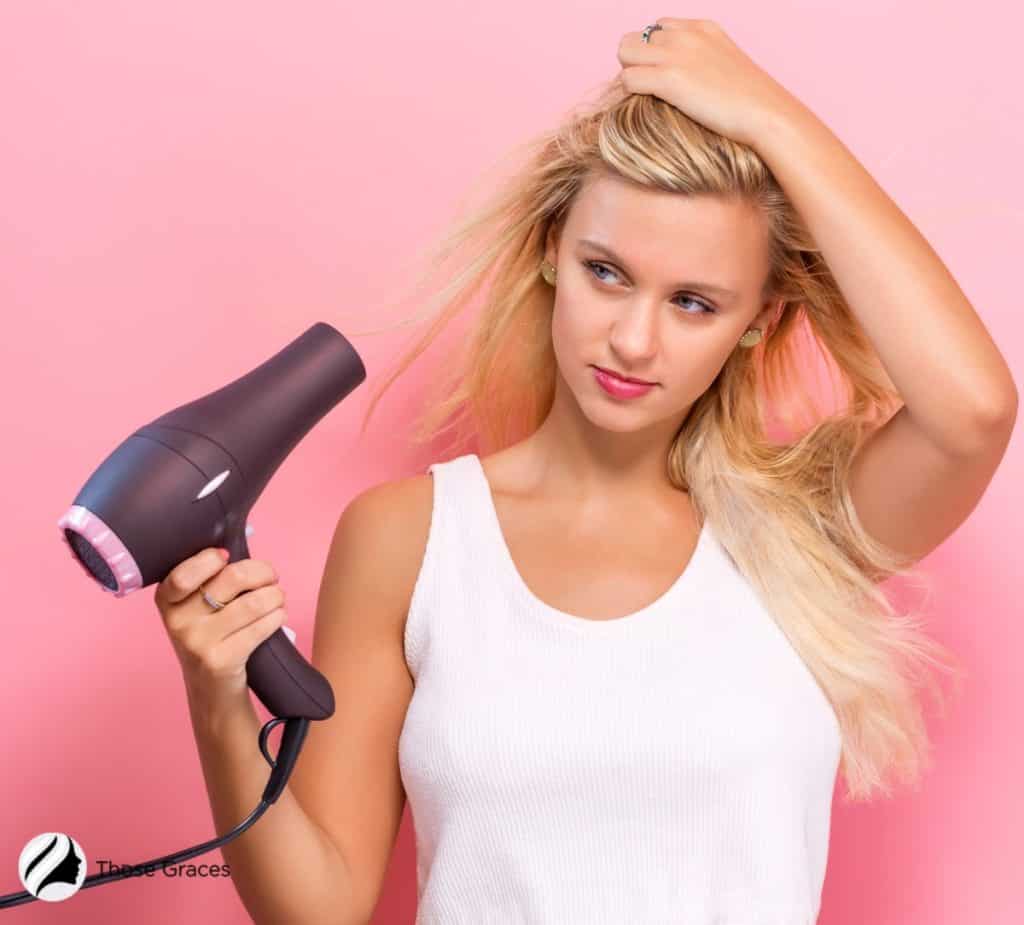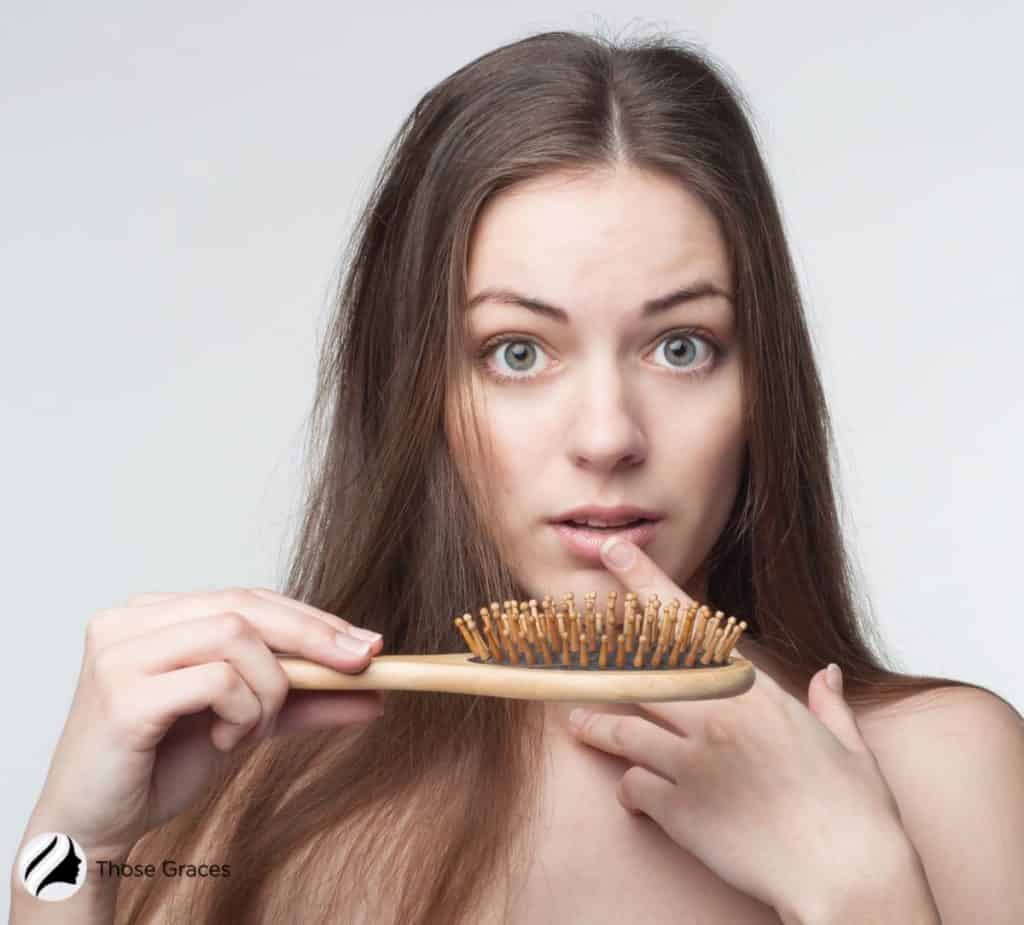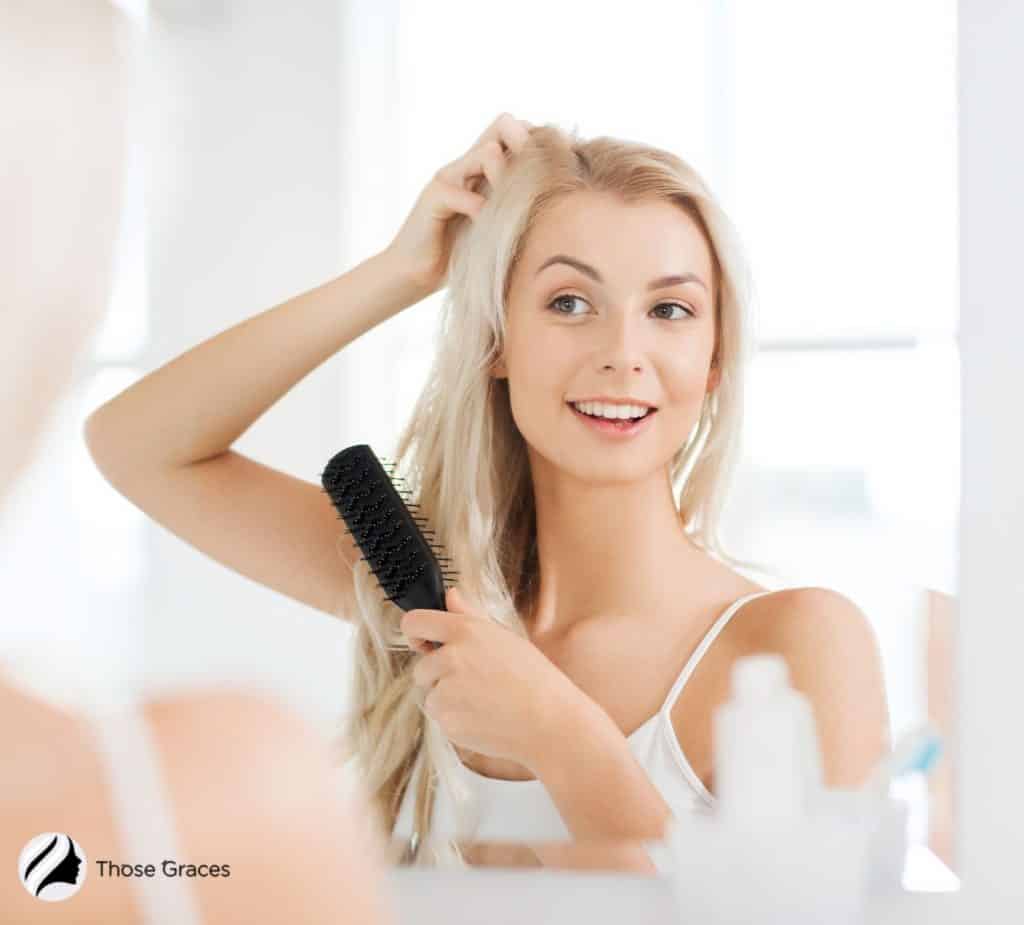I’ve always been worried about heat damage. Am I exposing my hair to it too much? Am I causing permanent damage? I did some research to see how to tell if my hair has heat damage.
There are several signs of heat damaged hair, and these include dryness, frizziness, split ends, and your hair struggling to hold color when you dye it. All of these suggest your hair needs some love.
In this guide, I’m here to take you through everything you need to look out for if you’re worried your hair might have heat damage and how to maintain healthy hair.
Table of Contents
Key Takeaways:
- If you’re concerned that your hair may have been damaged by too much heat styling, read this article for tips on restoring its health.
- Damage from heat can include dryness, frizziness, split ends, and color changes.
- You can restore the health of your heat-damaged hair with a few simple steps.
7 Signs of Heat Damaged Hair
If you want to know the most COMMON signs of heat-damaged hair, I have the big ones listed below. This should help you determine if your hair has been DAMAGED so that you can seek treatment to restore its luster.
1. Your Hair Has Lost its Bounce
Do you remember when your hair was springy and full of LIFE? If heat damage has occurred, your hair will likely be limp, greasy, and flat.

This is because heat damage DRIES out the hair follicle, making your hair look and feel greasy.
When hair is HEAT damaged, it also impacts the hair cuticle. It works its way throughout the strand and can cause serious damage to the hair proteins.
2. Your Hair Feels Dry and Rough
One of the most common signs of heat damage hair is when your once silky and soft hair starts to feel dry, BRITTLE, and rough.
This is because heat damage strips the natural oils from your hair, leaving it feeling dry and vulnerable. If you’re experiencing these symptoms, you might be wondering “how long to repair damaged hair?”
The timeline varies depending on the severity of the damage and the treatments applied, but with proper care, you can gradually restore your hair’s health over time.
Furthermore, understanding the “different types of hair breakage” can also help diagnose and treat hair issues. Breakage can occur near the scalp, in the middle of the hair strand, or at the ends, and each type can indicate various underlying causes.
Pro Tip: Use a moisturizing shampoo and conditioning treatment to help hydrate your hair and replenish some of the moisture lost to damage.
3. Your Hair is Frizzy and Has Split Ends
If your hair is frizzy, has split ends, or is generally unruly, it’s likely that heat damage is to blame. This is because heat damage causes the hair shaft to SWELL, which in turn makes your hair more likely to frizz and break.

Pro Tip: Try to avoid using your blow dryer too much, as it can damage the hair. Adding deep conditioning treatments to your hair care routine can HELP to fix heat-damaged hair.
4. Your Hair Has Lost its Elasticity
If your hair has lost its elasticity, it’s a sign that heat DAMAGE has occurred. This is because heat damage weakens the hair shaft, making it more likely to break.
This can happen when you use a curling iron too much, as the heat damages each hair strand. A coconut oil hair mask can help to RESTORE it a little.
5. Your Hair Has Lost its Shine
Heat damage is probably the culprit if your hair used to be SHINY and healthy-looking but now looks dull, limp, and sad. Heat damage dries out the hair, leaving it looking DULL and lifeless.
Pro Tip: Protein treatments can help protect hair follicles and build a strong protection system for your hair.
6. You’re Shedding More Than Usual
If you’re shedding MORE hair than usual, it could be a sign of heat damage. This is because heat damage weakens the hair follicle, making it more likely to break.

7. Your Hair isn’t Holding Color
If you’ve noticed that your hair color isn’t holding as well as it used to, heat damage could be to blame. Heat damage damages the HAIR SHAFT, making it more difficult for color to penetrate.
The above signs are enough to know if your hair is damaged, but you may also find out the difference between heat-damaged hair vs healthy hair to be aware of your hair’s status.
How Long Does It Take Heat-Damaged Hair to Recover?
The good news is that heat damage is REVERSIBLE, and your hair will eventually recover with the right treatment.
However, patience is essential as heat damage can’t be fixed overnight. Heat-damaged hair can take weeks or even months to recover, so be patient and give it the time it needs to heal.

What are Some Quick Tips for Preventing Heat Damage to Hair?
You can do several things to PREVENT your hair from being damaged by heat [1]. Some of my top tips include:
- Use a heat protectant before using any heat styling tools, even if they are the least damaging heat tools.
- Let your hair cool down before brushing it or running your fingers through it.
- Avoid using heat styling tools (any hot tools) on wet hair.
- Don’t use heat styling tools more than once a day.
- Use a lower heat setting when possible.
FAQs
Can Heat Permanently Damage Hair?
How Much Heat Is Safe For Your Hair?
Conclusion
Heat damage is a common problem caused by using heat styling tools too OFTEN or too high of a heat setting. If you’re concerned about heat damage, look for signs such as DRYNESS, frizziness, split ends, and color changes.
Heat damage is reversible, but it can take weeks or even MONTHS for your hair to recover. In the meantime, use a HEAT protectant and avoid using heat-styling tools on wet hair more than once a day.
I hope this guide has been able to help educate you on the signs so that you can take the best possible care of your hair.
So, do you have any of the above signs in your hair? Let us know in the comments section, so we can help you recover them!
Sources:
- 1. Hahn J. How Heat Affects Human Hair: Thermal Characterization and Predictive Modeling of Flat Ironing Results. Theses and Dissertations Available from ProQuest [Internet]. 2018;1–160. Available from: https://docs.lib.purdue.edu/dissertations/AAI10808169/


![How To Curl Short Hair With A Straightener [10 Best Ways]](https://thosegraces.com/wp-content/uploads/2024/07/How-To-Curl-Short-Hair-With-A-Straightener-211x150.jpg)
